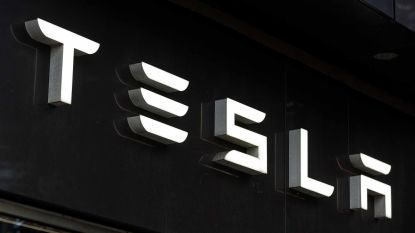The first half of Thursday looked a lot like Wednesday for investors. The Dow Jones Industrial Average outperformed its peers, this time on a solid earnings reaction for Salesforce (CRM (opens in new tab)). Meanwhile, the S&P 500 and Nasdaq Composite lagged as Treasury yields remained elevated and Tesla (TSLA (opens in new tab)) shares sold off after the company’s Investor Day. However, all three benchmarks moved higher in late-afternoon trading thanks to some dovish Fed talk.
Salesforce was the best of the Dow stocks today, adding 11.5% after the software-as-a-service (SaaS) firm reported earnings. In its fourth quarter, revenue jumped 14% year-over-year to $8.4 billion, and earnings per share doubled to $1.68. Both figures came in above estimates. CRM also gave higher-than-expected current-quarter and full-year guidance.
On the other hand, Tesla stock fell 5.9% after the electric vehicle maker unveiled its “Master Plan 3” at last night’s Investor Day. The company discussed a host of initiatives, including eliminating reliance on fossil fuels in part by “improving the energy density of batteries” and seeing “all transportation go fully electric,” said CEO Elon Musk. Tesla is also focused on “rethinking manufacturing again,” which it believes could result in a 30% improvement to efficiency.
Subscribe to Kiplinger’s Personal Finance Be a smarter, better informed investor.
Save up to 74%
Sign up for Kiplinger’s Free E-Newsletters Profit and prosper with the best of expert advice on investing, taxes, retirement, personal finance and more – straight to your e-mail.
Profit and prosper with the best of expert advice – straight to your e-mail.
Sign up for Kiplinger’s FREE Investing Weekly e-letter for stock, ETF and mutual fund recommendations, and other investing advice.
Additionally, TSLA said that its goal to sell 20 million vehicles annually by 2030 – up from roughly 1.3 million in 2022 – will require a $175 billion investment. The carmaker confirmed it is building a factory in Mexico and said it is bringing its Cybertruck to the market this year, but failed to give details on any new models of vehicles it is adding to its lineup.
“Investors were underwhelmed, hoping to hear more than just a review of past achievements or the longer-term vision,” says Greg Bassuk, CEO at AXS Investments (opens in new tab). “Rather, they were listening intently for more meat on the bones regarding Tesla’s concrete 2023 plans to remain competitive in an increasingly crowded and price-sensitive EV market.”
While the major indexes spent most of the day mixed, mid-afternoon comments from Atlanta Fed President Raphael Bostic, who said that he is “firmly in the quarter point [interest rate] move” for the next Fed meeting, had them all closing higher today. The Nasdaq finished up 0.7% at 11,462, the S&P 500 rose 0.8% to 3,981, and the Dow added 1.1% to 33,003.
Prepare for more stock market volatilityIt wasn’t only single-stock and central bank news making headlines today. On the economic front, weekly jobless claims unexpectedly declined last week (-2,000 to 190,000). The Labor Department also upwardly revised fourth-quarter unit labor cost growth – a measure of inflation – to 3.2% from 1.1% as was initially reported in early February.
“Economic data remains the investor narrative for March,” Bassuk says. “Just as the February selloff was sparked by the strong January jobs report and a multitude of robust growth and inflation readings, Wall Street and Main Street eagerly await upcoming economic data to decipher the trajectory of the job market and inflation to gauge the likely actions of the Fed in March and throughout 2023.” And unless we see economic data weaken, “stocks look increasingly susceptible to a potentially intense pullback in March.”
Thankfully, low-volatility strategies offer investors a way to hedge their portfolios against a market downturn. Whether it be through the best low-volatility stocks or the best low-volatility ETFs, these picks can help balance out a portfolio during periods of instability.
